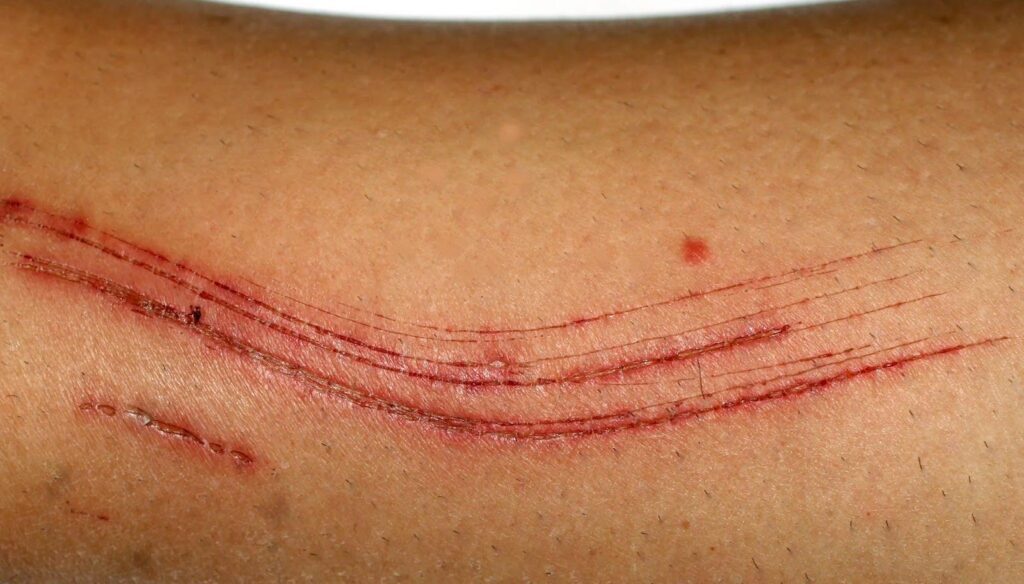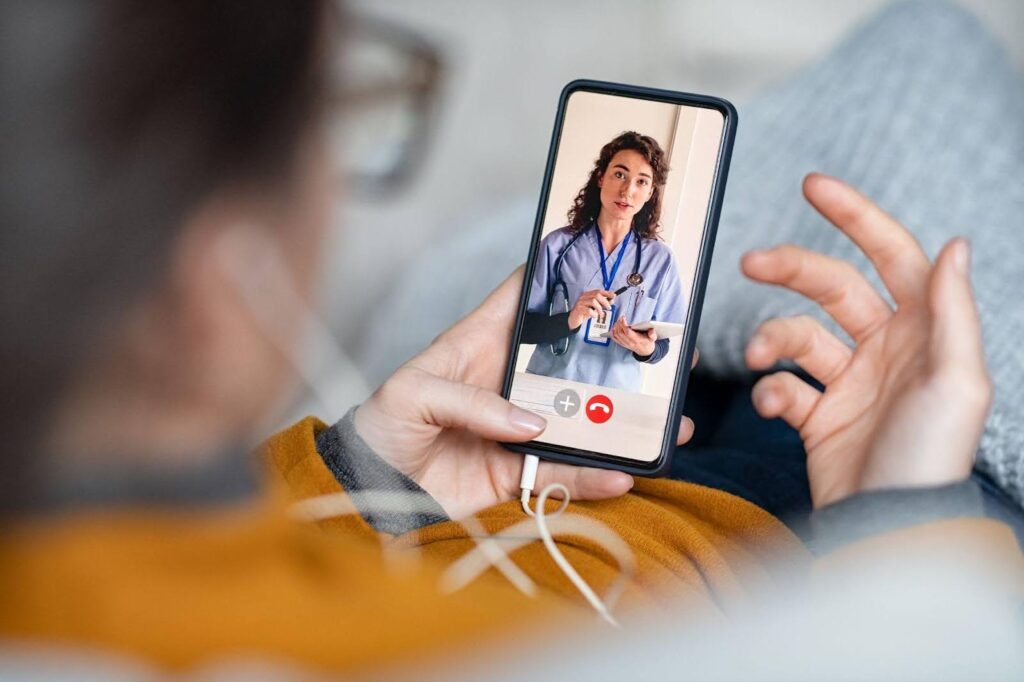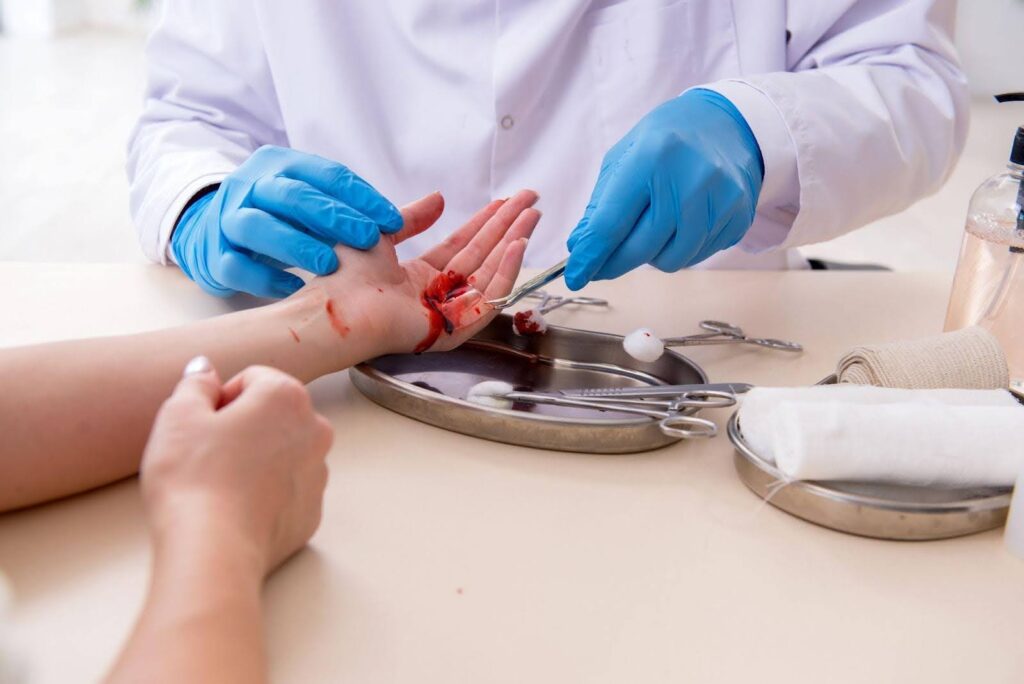Minor injuries happen every day — whether it’s a twisted ankle, a small burn, or a deep scrape that won’t stop bleeding. While many of these injuries seem easy to manage at home, it’s not always clear when you need medical help. And ignoring symptoms or waiting too long to seek care can turn a minor issue into something more serious.
That’s where your urgent care provider or walk-in clinic comes in. Knowing the signs that need attention — and understanding when to switch from home remedies to professional minor injury treatment — can save you time, stress, and a longer recovery.
In this blog, we’ll discuss what to watch for and when to seek care. Keep reading to learn more.
What counts as a “minor” injury?
Minor injuries might sting, swell, or bruise, but don’t usually require emergency care.
Examples of minor injuries include:
- Small cuts, scrapes, or abrasions
- Mild sprains or strains
- Superficial minor burns that don’t blister
- Bruises or bumps from falls or impacts
While these injuries may not seem serious, they still deserve attention.
Why?
Minor wounds can become infected.
Mild sprains might hide a small fracture.
A burn that seems harmless might worsen if not cleaned properly.
Even small issues can cause delays in healing if they’re ignored or treated incorrectly.
The key is to monitor the injury’s behavior over time. If something that seems minor starts getting worse or doesn’t improve after a couple of days, it’s a sign that your body may need more support.

Warning signs that need medical attention
Even a minor injury can become serious if certain warning signs appear. If you notice any of the following symptoms, it’s time to seek medical help. These signs often mean the injury is worse than it seems or is not healing properly.
Bleeding that won’t stop
If a cut continues bleeding after 10 minutes of steady pressure, or if blood soaks through the bandage repeatedly, the wound may need stitches or further evaluation to stop the bleeding safely.
Signs of infection
Watch for redness, warmth, swelling, pus, or increasing pain around a wound. If you develop a fever or feel generally unwell, the infection could be spreading and needs treatment quickly.
Persistent or severe pain
Pain that doesn’t improve with rest, ice, or over-the-counter medication could signal a sprain, small fracture, or soft tissue injury. If it hurts to move or bear weight after a day or two, don’t ignore it.
Numbness, tingling, or weakness
These symptoms might indicate nerve involvement. Even with a seemingly minor injury, nerve damage can cause long-term issues if not addressed promptly.
Injury near sensitive areas
Wounds near the eyes, face, joints, or genitals are more prone to complications. Even if the injury appears small, these areas require careful attention.
Burns that blister or cover a large area
Minor burns are usually red and painful but don’t blister. If blisters appear or the burn covers more than a few inches, you should have it examined by a medical professional.
An object stuck in the wound
If something is embedded in the skin — like glass, metal, or wood — don’t try to remove it yourself. Medical care is needed to avoid further damage or infection.
Your body knows when something’s wrong. If an injury seems to be getting worse, not better, or if you feel unsure, don’t wait. Seeking care early can prevent complications and speed up recovery.
When to go to urgent care
Urgent care is the best option when an injury isn’t life-threatening but still needs prompt attention. It’s perfect for situations where you don’t need the emergency room, but you also can’t wait for a routine appointment.
Here are some examples of injuries that are ideal for urgent care:
- Sprains or strains that cause swelling, bruising, or difficulty walking
- Cuts or wounds that may need stitches but aren’t bleeding heavily
- Mild to moderate burns that are painful or blistered but don’t involve the face or a large area
- Possible minor fractures or dislocations (urgent care centers often have X-ray capabilities)
- Animal bites or puncture wounds
- Painful swelling or joint injuries after a fall or accident
Urgent care providers can quickly evaluate your condition, provide treatment, prescribe medication, and refer you to a specialist if needed. You’ll usually be seen faster than at the ER — and for a much lower cost.
If the injury is painful, getting worse, or affecting how you move or feel, urgent care gives you quick, professional care to help you heal and get back on track.

When to call your primary care provider
Not every injury needs a trip to urgent care. Your primary care provider is often the best place to start, especially if the injury is mild, not getting worse, or you’re looking for follow-up care.
Here are some situations when calling your family doctor makes the most sense:
- An injury that isn’t healing after a few days of home care
- Persistent soreness or stiffness from a minor fall, twist, or strain
- Questions about how to treat a wound or manage symptoms at home
- Follow-up after an urgent care or ER visit to check progress or remove stitches
- You’re unsure whether you need to be seen, and want advice from someone who knows your health history
Your primary care provider knows your medical background, understands your overall health, and can give tailored advice based on your needs. Whether it’s scheduling a quick exam, recommending at-home treatment, or referring you to a specialist, they’re your go-to for trusted guidance.
When in doubt, call. It’s always better to check in early than to wait and risk complications.
What to do at home while you monitor the injury
If your symptoms seem mild and manageable, you can often start with minor injury treatment at home. The key is to monitor your progress closely and know when to switch from home care to professional support.
Start with basic first aid:
- Clean the area with mild soap and water to prevent infection
- Apply pressure to any bleeding wounds with a clean cloth
- Use ice for 15–20 minutes at a time to reduce swelling and pain
- Elevate the injured area above heart level, if possible, to decrease inflammation
- Take over-the-counter medications like ibuprofen or acetaminophen (as directed) to ease pain and swelling
Watch for changes as you monitor the injury over the next 24 to 48 hours. Is the pain staying the same, improving, or getting worse? Are you seeing signs of infection or struggling to move the area?
Don’t wait if you notice symptoms that don’t improve or are unsure what to do next. Visit a nearby urgent care center or walk-in clinic for a proper evaluation. Early treatment can prevent minor issues from becoming major ones.

Why ignoring the signs can lead to bigger problems
It’s easy to brush off a sore ankle or a small cut, but ignoring the warning signs of a minor injury can lead to serious complications. What seems manageable at first may quietly worsen if it’s not appropriately treated, and by the time it becomes obvious, recovery can take much longer.
An untreated infection can spread quickly beneath the skin or into the bloodstream. A sprain that turns out to be a small fracture might heal incorrectly without support. And joint pain that’s “not that bad” can turn into long-term stiffness or loss of mobility.
Delaying care doesn’t save time. It often increases downtime, makes pain worse, and can result in more expensive treatment later on. That’s why it’s so important to recognize when your injury needs attention.
Turn to Bonneville Family Practice for minor injury treatment
If you’re dealing with a minor injury that’s not healing properly, causing new symptoms, or leaving you unsure about what to do next, don’t wait it out. At Bonneville Family Practice, our dedicated team is here to help you get the care you need, when you need it.
Whether you visit our walk-in clinic for same-day support or schedule a visit through our urgent care services, you’ll receive compassionate, expert minor injury treatment in a setting that puts your comfort first. From wound care to sprains and everything in between, we take your concerns seriously and help you heal quickly, with guidance you can trust.
Don’t take chances with your health. Call Bonneville Family Practice today to get the care you deserve.